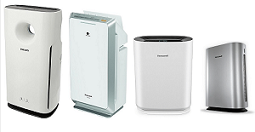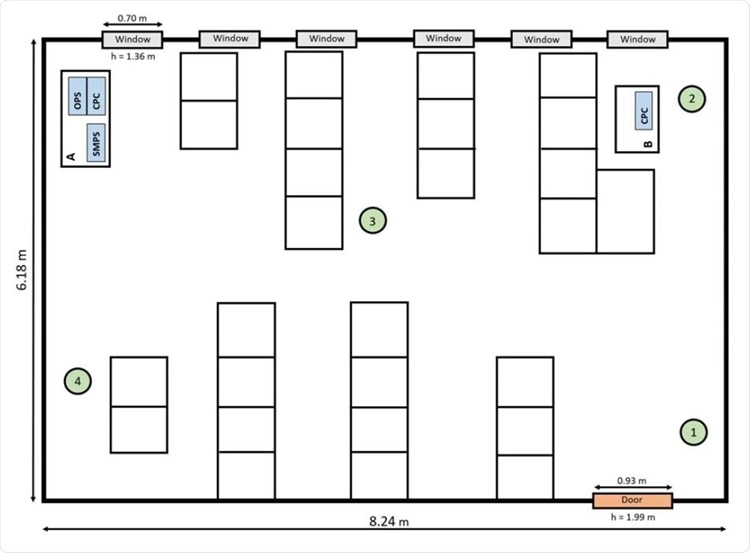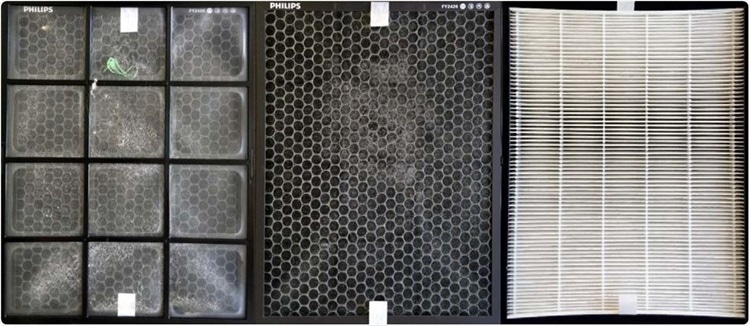Air Purifiers Help Reduce SARS‐CoV‐2 Transmission In Closed Rooms According to German Study
Source: Air Purifiers - COVID-19 Oct 07, 2020 5 years, 4 weeks, 2 days, 8 hours, 53 minutes ago
Air Purifiers - COVID-19: A new study by German researchers from the Institute for Atmospheric and Environmental Sciences, Goethe University Frankfurt am Main-Germany has demonstrated that air-purifiers in enclosed indoor places can help reduce SARS-CoV-2 transmission.

The research findings are published on a preprint server and have yet to be peer-reviewed.
https://www.medrxiv.org/content/10.1101/2020.10.02.20205633v2
At present, three transmission pathways are being considered for coronavirus disease (COVID‐19): direct transmission through droplets, airborne transmission through virus‐containing aerosols, and fomite transmission.
Numerous studies recently established airborne transmission of SARS‐CoV‐2 coronavirus through aerosol particles containing the virus as a key pathway for SARS‐CoV‐2 infection.
https://academic.oup.com/cid/advance-article/doi/10.1093/cid/ciaa939/5867798
The credible scientific evidence for airborne transmission includes the collection of aerosol samples with viable SARS‐CoV‐2 virus 4.8 m away from a hospitalized COVID‐19 patient.
Another study also showed that the SARS‐CoV‐2 virus remains viable in aerosols with a half‐life of 1.1 hours. These findings make it very important that we implement suitable measures to prevent the spread of infections in crowded indoor areas such as schools, restaurants, bars, offices, meeting rooms, and so on.
https://www.nejm.org/doi/full/10.1056/nejmc2004973
Even with mounting evidence for airborne transmission, a clear differentiation of droplet and airborne transmission pathways is not easy, as it is not possible to reconstruct the precise details of transmission for most infections.
Many studies have shown that individuals with COVID-19 infection can stay fully asymptomatic or just develop mild symptoms. Also, infected persons are highly contagious shortly before they start showing symptoms of the disease.
The German study team recently conducted experiments to test the efficiency and practicality of using mobile air purifiers in school classrooms to reduce airborne transmission risk of SARS-COV-2.
For the study, 4 air purifiers with high-efficiency particulate air (HEPA) filters were installed in a high school classroom while classes were going on. They monitored several parameters, including the total aerosol number concentration for particles >3 nm at 2 locations in the classroom (uCPC), aerosol mass (PM10 derived from OPS), the aerosol size distribution in the range of 10 nm to 10 μm (SMPS and OPS), and the concentration of CO2 in the classroom.
For study comparison purposes, they did parallel measurements using a uCPC and an OPS in an adjacent classroom without air purifiers.
The study found that air purifiers caused a homogeneous reduction in aerosol concentration in closed rooms.
The study performed by the team judged the ability of air purifiers
to efficiently reduce the aerosol concentration during everyday operation in a school classroom. When operating air purifiers with a volume flow of 1027 m3/h in a classroom of volume 186 m3 during class times with windows and door closed, they found that the aerosol concentration reduced by over 90% within nearly 30 minutes.
The substantial reduction in aerosol concentration was homogeneous across the room and for all particle sizes. These measurements were supplemented by a simple calculation that estimates the maximum levels of virus‐containing aerosols generated from a contagious person speaking in the closed room with and without air purifiers.
The study team said, “In order to reduce the risks of aerosol transmission for SARS‐CoV-2 air purifiers are an important additional measure of precaution, especially in cases when no fixed ventilation systems are installed and when windows cannot be opened.”
The calculation and the measurements made as part of this study show that air purifiers are a very effective measure to reduce the airborne transmission risk of SARS‐CoV‐2 significantly.
 Sketch of the classroom indicating the position of the air purifiers (#1 to 4) and the measurement instrumentation
Sketch of the classroom indicating the position of the air purifiers (#1 to 4) and the measurement instrumentation
at two locations A and B.
The study team also estimated that the inhaled dose is reduced by a factor of 6 when staying with a highly infective person for 2 hours in a closed room with air purifiers with a total air exchange rate of 5.7 h-1.
However despite all that, in closed rooms that are crowded, frequent ventilation with fresh air is required to keep the CO2 levels below the maximum permissible values.
The researchers believe that air purifiers can be used as an additional measure of precaution to reduce the aerosol transmission risk for SARS‐CoV-2, especially in buildings with no fixed ventilation systems and no openable windows.
 Pre-filter (left), active charcoal filter (middle) after one week of operation in the classroom. Coarse dust,
Pre-filter (left), active charcoal filter (middle) after one week of operation in the classroom. Coarse dust,
hairs and fluff can be discerned. No deposits of particles could be discerned by eye on the
HEPA-Filter (right). Sections that appear darker are due to the illumination.
The study team commented, “While our study focuses on school classrooms, these results can in principle be transferred to similar situations in closed rooms that are occupied by more than a single person, such as meeting rooms, restaurants, bars, shared offices, waiting rooms, and others.”
In summary, the operation of mobile air purifiers in classrooms and other settings seems technically feasible. In order to reduce the risks of aerosol transmission for SARS-CoV-2 air purifiers are an important additional measure of precaution, especially in cases where no fixed ventilation systems are installed and when windows cannot be opened. The implementation and maintenance costs need to be compared to the substantial advantages of reducing the amount of infections and Covid-19 cases, the reduced needs for contact tracing and the avoidance of major disruptions caused by school closures.
Nevertheless, air purifiers do not replace other measures for the reduction of transmission such as wearing face masks, hygiene measures and social distancing. The purifiers should be considered as efficient additional measures. An important co-benefit of a standard operation of air purifiers is that average levels of particulate matter (PM) are considerably reduced leading also to a long-term health benefit.
For more on
Air Purifiers-COVID-19, keep on logging to Thailand Medical News.


